Do you want this case study in pdf?
Download it in English🇬🇧 and Spanish🇪🇸 directly to your inbox.
DownloadThe World Health Organization (WHO) estimates that, at least 15% of the World population have some kind of disability. It is considered that, in the near future, this figure can be doubled due to the population aging.
In Mexico, the last report published by COPRED shows that 13.2% of the population present limitations on their daily functioning. This means that, at least 16,835,335 people require physical rehabilitation services, while there are only 10,000 physiotherapists in the country.
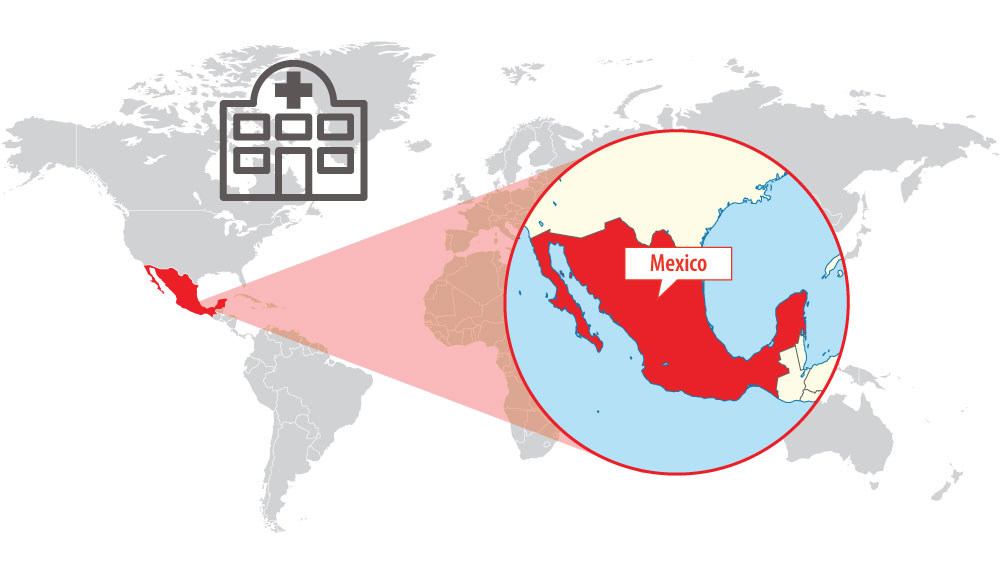
Location of Mexico
Faced with this social demand, the Mexican holding company Horkest offers global services related to Physiotherapy through four business units. In terms of education of future professionals, IPETH has an institution specialized in the training of physiotherapists in Mexico and Latin America in Puebla, Tlalpan, Tlalnepantla and Guatemala. They also offer rehabilitation services through Recovery, the network of Rehabilitation and Sports Medicine Clinics in Puebla, Tlalnepantla, Tlaxcala and Orizaba. Another of the group’s subsidiaries, Kinnov, develops technological innovation and equipment for physical rehabilitation and health care. And finally, the holding company carries out an important solidarity activity in favour of people with disabilities through HUMA Foundation.
The innovation area is transversal to the whole business group developing new technologies for the rest of the areas. As Erik Díaz explains, in Kinnov, they discovered the existence of MySignals thanks to the technological surveillance activity carried out by its professionals. “We were looking for IoT devices applied to health with the aim of bringing rehabilitation to social clinics in places where access to health services was difficult“, he says.
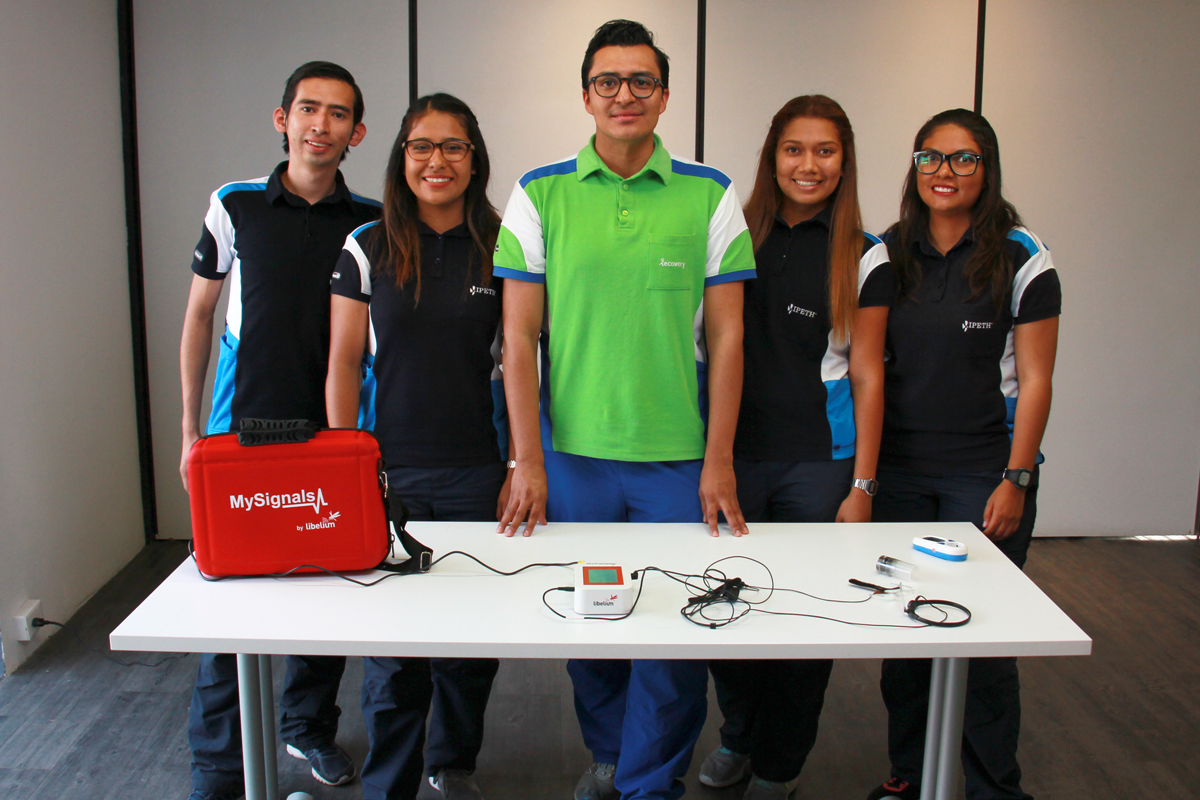
IPETH research team
Kinnov’s aim for this project is to increase the service coverage offered by physiotherapists and to use remote medicine technologies to gain efficiency. “This made us start looking for solutions and developing this project that allows us to connect the patient to the MySignals platform. We find it very useful as MySignals sensor data can be downloaded via the API to the patient’s direct medical record“, he says.
Kinnov’s research team is currently using MySignals in a project that also involves other sensors necessary for the physiotherapeutic process. Aware of the current needs of the Physical Rehabilitation area, Kinnov offers technological and innovative equipment, products and services, with the purpose of providing doctors, physiotherapists, specialists and health promoters with tools that help to improve the patients’ quality of life.
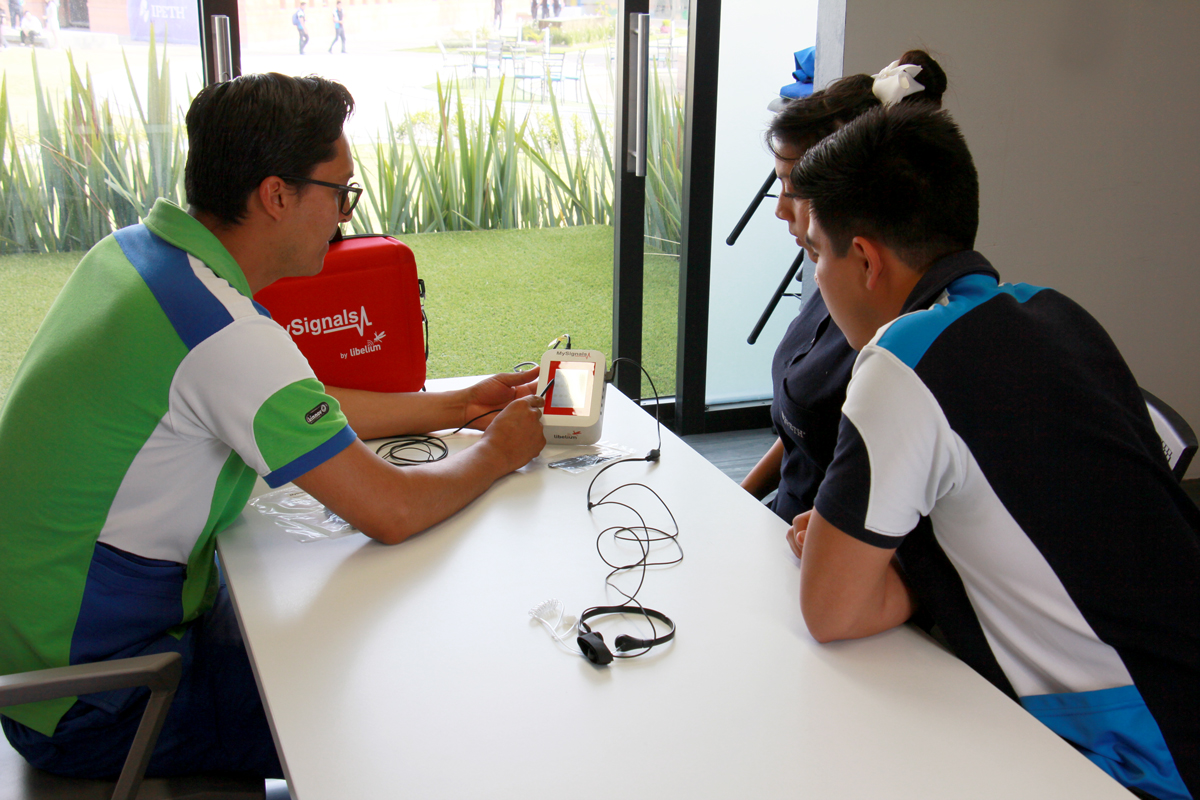
IPETH research team working with MySignals, Libelium’s eHealth platform
Jorge Bustamante, a graduate in Physiotherapy from IPETH, leads the research team that is conducting clinical trials to use MySignals with patients receiving physiotherapy treatment. They use different MySignals sensors to evaluate the results of four rehabilitation areas: Sports, Orthopedic, Pulmonary and Neurological.
The research is being carried out on a group of 175 patients: 50 from the sports area to analyze pathologies related to ankle sprain; 50 from the orthopaedic area to analyze performance improvement in university football players; 50 patients from the lung area with COPD (Chronic Obstructive Pulmonary Disease); and 25 patients from the neurological area with Spastic Cerebral Palsy.
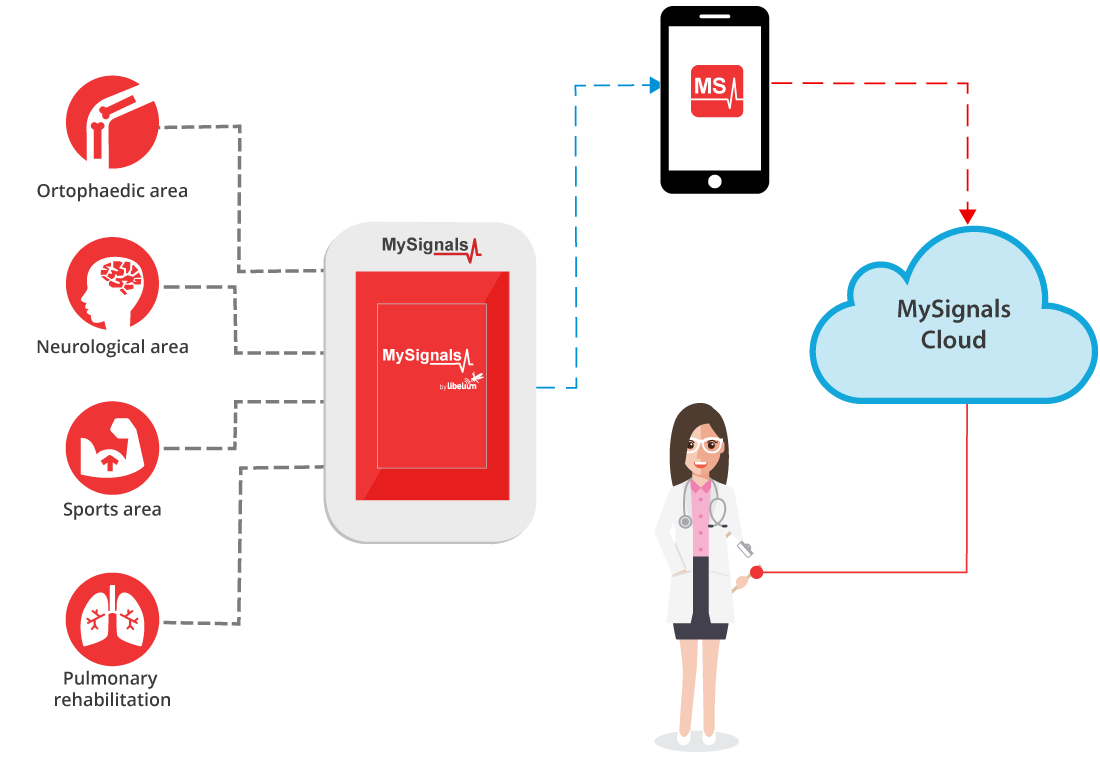
Diagram of Kinnov rehabilitation project carried out by IPETH research team
The aim of this research is to conclude which sensors add value to the patient’s clinical diagnosis.
In the Orthopaedic area, the study led by Carla Daniela López Carrillo, aims to determine the patient’s instability through proprioceptive tests after suffering a sprained ankle. Blood pressure, galvanic response (to detect the change in heat and electricity transmitted by the nerves), accelerometer (to measure body speed) and electromyogram (muscle contractions) sensors are used.
In the Sports area, the research led by Lenis Aidee Solis Roque, aims to improve the physical performance of the athlete by measuring stability, strength and power. The sensors used here are accelerometer, gyroscope (muscle enhancement), actigraph (heart rate), stopwatch (time), kinetic sensor (motor gestures), calorimeter (calories consumed), spiroergometry (to examine the effect of CF intake), electromyogram and isokinetic dynamometer (muscle strength).
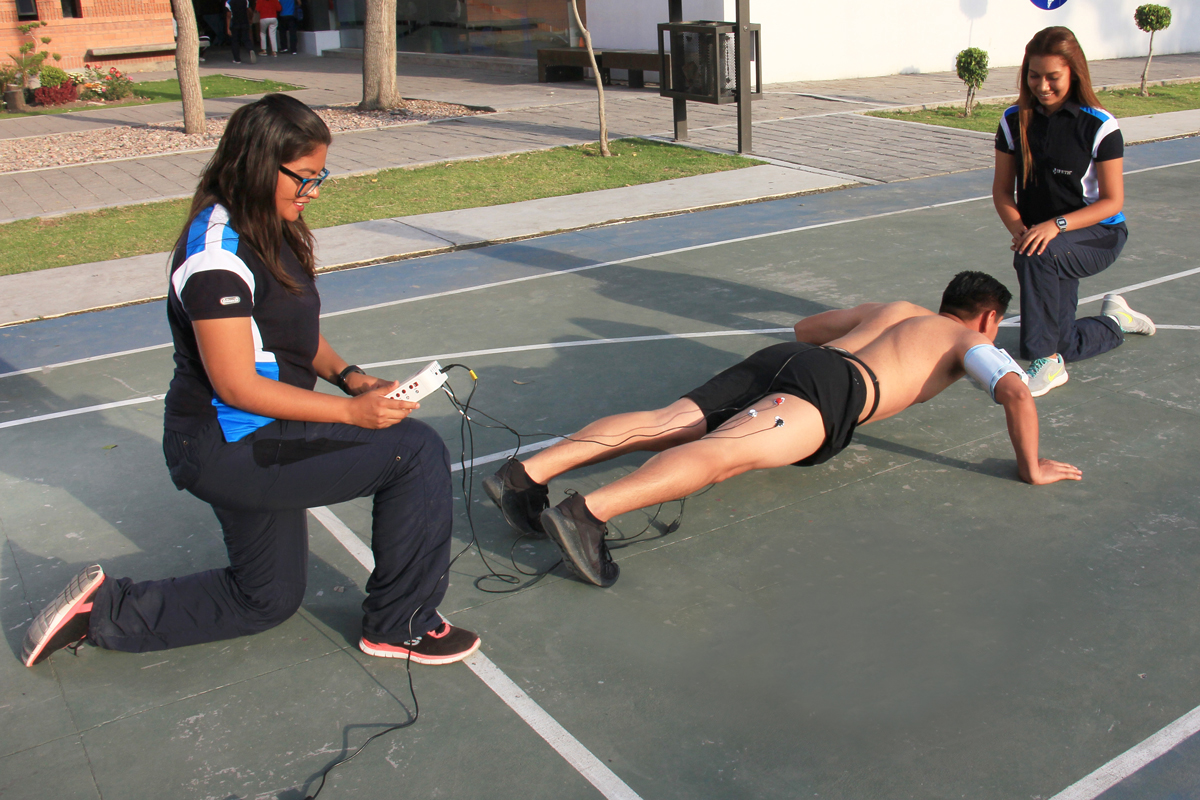
MySignals eHealth platform to control athletes performance
In the area of Pulmonary Rehabilitation, Adrián Romero Ríos, aims to demonstrate the effectiveness of a physiotherapeutic treatment to improve ventilation and muscle levels in patients with COPD. The following sensors are used for this purpose: spirometer (lung capacity); airflow to show potential changes in the course of treatment; SPO2 (measures the percentage of oxygen carried in the blood); blood pressure (measures hypertension); and electromyogram to show the work of the respiratory musculature, including an analysis of the lower limb musculature which, in patients with COPD, may be affected.
Finally, in the Neurological area, the study directed by Cecilia Magallanes González, plans to act with 25 patients with Spastic Cerebral Palsy with the objective of having quantifiable results of the movements and compensations that the patients make at the moment of starting the movement.
Spasticity is a hyperactivity of the myotatotic reflex arc that brings with it the so-called pyramidal syndrome, which is associated with paralysis and selective loss of movement. Spasticity has symptoms such as muscular hypertonia, hyperreflexia and voluntary kinetic hyperactivity.
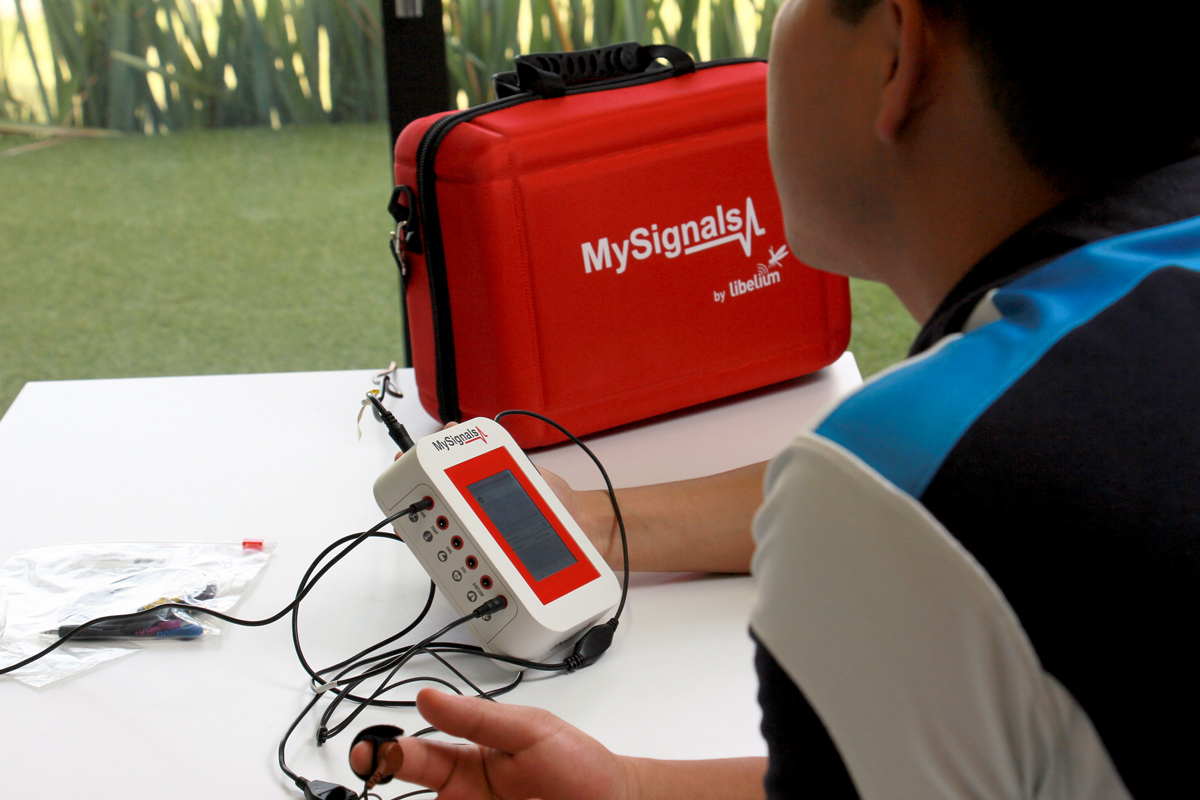
GSR sensor working with MySignals SW eHealth platform
Using MySignals and a set of sensors such as acceleration, electromyogram, pulse oximeter and galvanic response, the study is performed to define in each patient the level of Cerebral Palsy according to the Motor Function Classification System (GMFCS). The level scale established by the GMFCS is measured in a quantifiable way for each of the parameters to be reviewed. In this way, a better diagnosis of each patient can be offered to show which are the alterations in their locomotion.
The procedure of this study is performed in several phases with the patient
In the first stage, a postural evaluation is carried out by making a photographic and video record of the use of the sensors to evaluate the effectiveness of the movements that are carried out at that time. The accelerometer is placed in the cervical spine, the electromyogram is placed in the rectus abdominis muscle, the pulse oximeter is used before, during and after activity, and the galvanic response sensor measures sweating before activity.
The second stage evaluates gross motor function and decubitus and rotary movements, sitting, on all fours, kneeling, standing and gait. The accelerometer measures the involuntary movements being performed, the electromyogram measures the behaviour of the rectus abdominis at the time of the movements, the pulse oximeter indicates the amount of oxygen at the time of exertion and the galvanic response sensor shows whether the patient is in a stress phase.
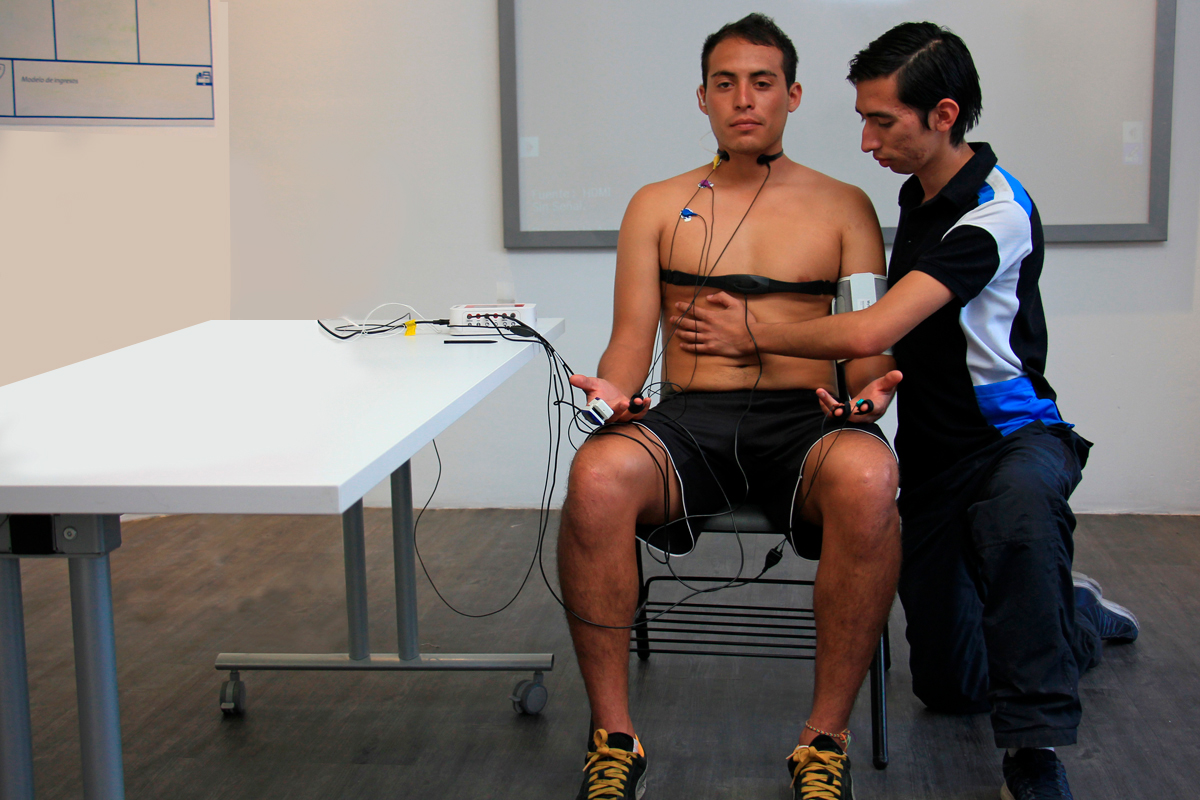
Evaluation of the patient using MySignals
The third stage evaluates the patient’s posture. Dissociation, alignment, stability, proprioception and center of gravity positioning exercises are used to restore human body movement. It begins voluntarily, with emphasis on seating, transfers and mobility.
In the fourth stage, the postural evaluation and the evaluation of gross motor skills is carried out again, taking into account the previous data obtained in the evaluation of decubitus movements and rotations, sitting, on all fours, kneeling, standing and gait.
This case study helps to achieve the following Sustainable Development Goals:
For more information about our products contact the Libelium Sales Department.
If you want to download the article in Spanish, please click here.
More info:
References:
Discover our MySignals eHealth Kits at The IoT Marketplace.
Download it in English🇬🇧 and Spanish🇪🇸 directly to your inbox.
Download*TERMS AND CONDITIONS TO USE LIBELIUM CONTENT. Libelium is the owner of all images provided on the website and it can only be used quoting the source. Any video, photograph, diagram, infographic or logo cannot be used or transformed without Libelium authorization. You can request the files in high resolution to publish on your website or to insert in marketing flyers always using Libelium logo and linking with Libelium website. If you are going to publish the article in a website or media or in a white paper or research study, it must be done including all the references and mentioning Libelium as the source of the content. © Libelium Comunicaciones Distribuidas S.L. – www.libelium.com
Stay up to date in IoT!
Sign up to our newsletter and receive the latest, exciting news.
More than 18 years of experience in IoT support us.


















IoT Solutions for
IoT Products
© Libelium Comunicaciones Distribuidas S.L. | Terms And Conditions | Privacy Policy | Cookies Policy | Security Policy | Reporting Channel